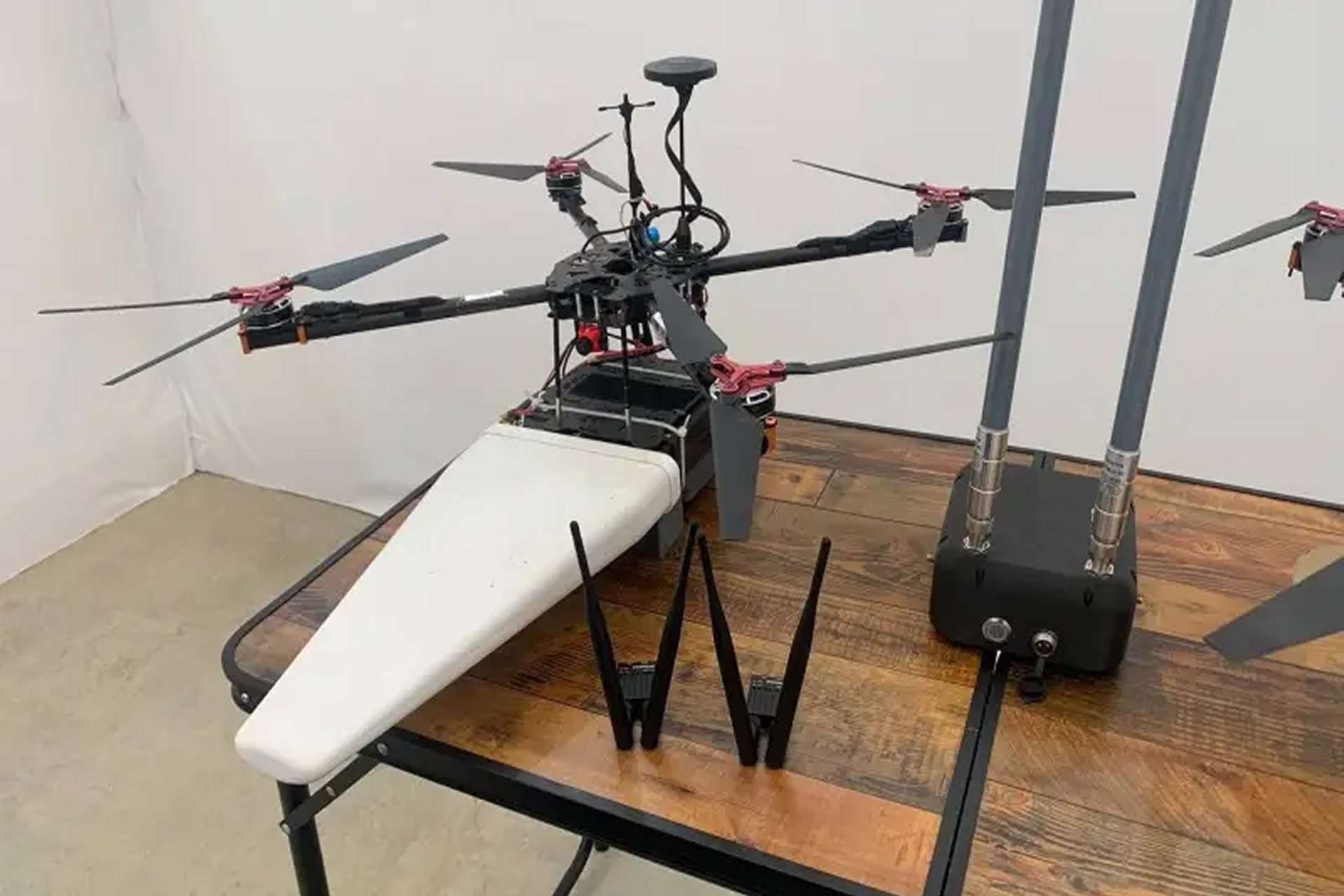Breaking News
Russia Develops Advanced Radiogoniometric Drone to Pinpoint Ukrainian Radio Interference Sources.
On July 29, 2024, the Russian newspaper Sakhalin News announced that the Russian company Kursir had unveiled an important step in surveillance and technological management with the development of a radiogoniometric drone specialized in the rapid identification of radio interference sources. This new tool was revealed during the recent "Archipel" intensive design and training exhibition in the Sakhalin region, highlighting Russia's continuous progress in drone technology.
Follow Army Recognition on Google News at this link

Kursir Radiogoniometric Drone (Picture source: Russian Media)
The drone is equipped with a specially designed radiogoniometer and a directional antenna that enables it to precisely locate radio emission sources. This capability is crucial for various applications, including the accurate determination of base station and drone operator positions, functionalities increasingly essential in the era of electronic warfare and sophisticated communications.
The developers explain that the use of this drone can greatly enhance the efficiency of military operations, particularly in countering issues caused by the use of enemy drones in combat zones. By quickly and effectively identifying interference sources, this drone offers a strategic solution for maintaining the integrity of communications and field operations.
Beyond its military use, the radiogoniometric drone also finds utility in civilian scenarios. It is particularly suited for search and rescue missions, capable of locating crashed aircraft or missing persons emitting distress signals via radio beacons. The drone's ability to detect targets up to a distance of 5 kilometers could transform rescue operations, making interventions quicker and more targeted.
The technology for detecting radio frequencies using drones, as described, is not exclusive to Russian developers. Indeed, as early as 2018, Israeli researchers were also working on similar capabilities, demonstrating a broad international interest and development in this type of surveillance technology.
While it's unclear if the Russian approach to detecting radio waves is similar to that used by Israeli scientists, to better understand the significance of this research focus, let’s consider the advancements made by Israel. The Israeli technology focuses on capturing and analyzing variations in radio frequency signals to detect changes in the environment. This system operates by employing drones equipped with sensors capable of detecting subtle shifts in the radio signals used for communication with operator-controlled devices, such as smartphones or remote controls.
Israeli drones are designed to intercept radio signals, not just for navigation and control but also for intelligence gathering. These drones analyze the signals between operators and their devices, focusing on metadata rather than the content of the communications.
Israeli drones monitor data transmission rates. Significant changes in the data sent by a drone—triggered by changes in the visual field, such as the activation of a smart film on a window—indicate a change in the monitored scene. This can lead to a spike in the data throughput of the radio frequency signal as the drone transmits a large amount of new pixel data.
Israeli drones use advanced algorithms to interpret these changes. If a normally transparent window suddenly becomes opaque, the drone recognizes this as an anomaly and records the event, marking it for further analysis.
On the battlefield, radiogoniometric drone technology offers significant strategic advantages. These drones can detect and precisely locate sources of radio interference, thereby enhancing surveillance and enabling the neutralization of electronic threats. By identifying the locations of enemy drone operators or other radio emission sources, military forces can conduct jamming or targeted countermeasures to disable or disrupt enemy communications and commands. This enhances troop security by reducing exposure to attacks and increasing the effectiveness of offensive operations. Additionally, this capability can be used to protect critical infrastructure and monitor enemy movements without direct engagement, thus minimizing risks to personnel while maximizing tactical impact.


























